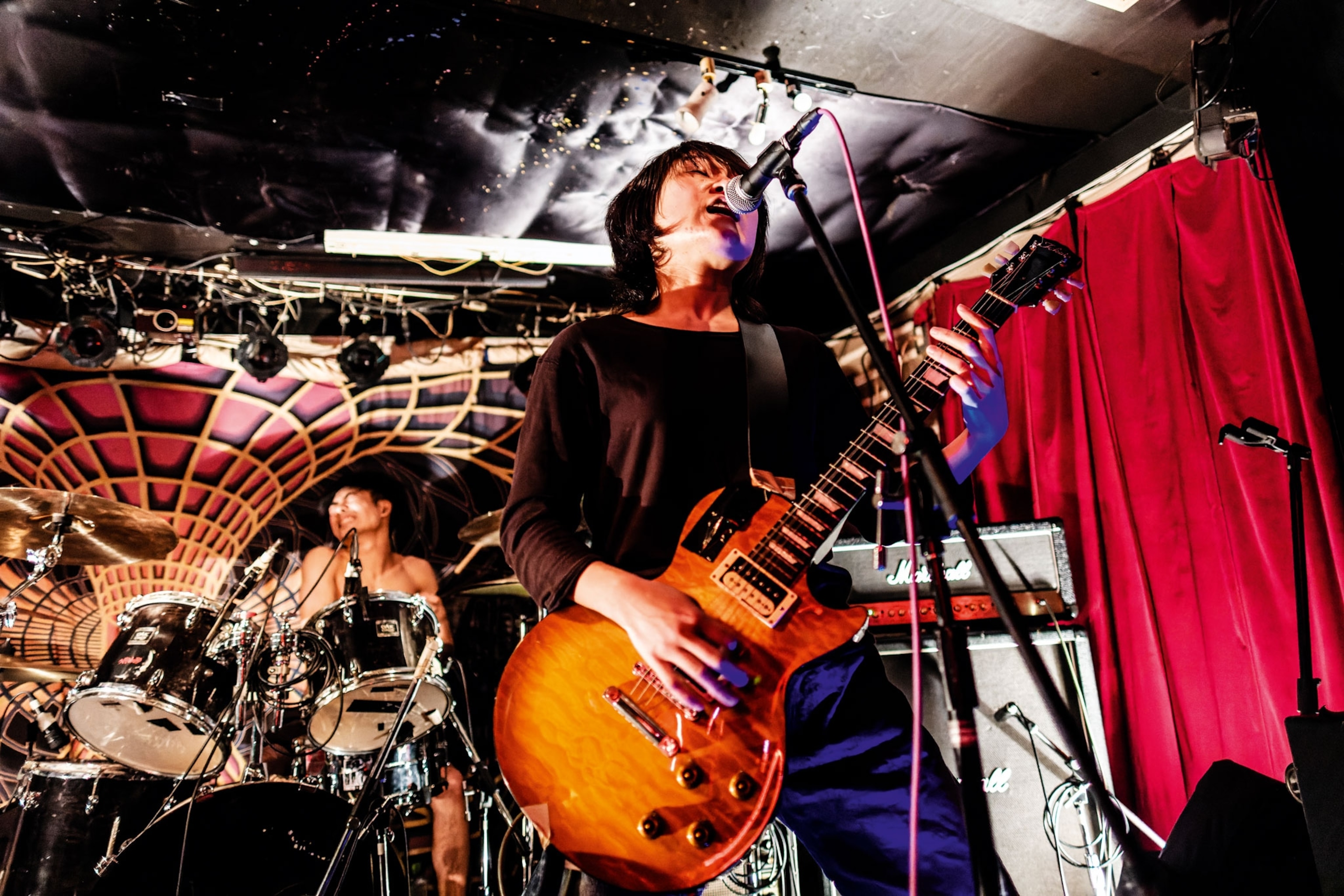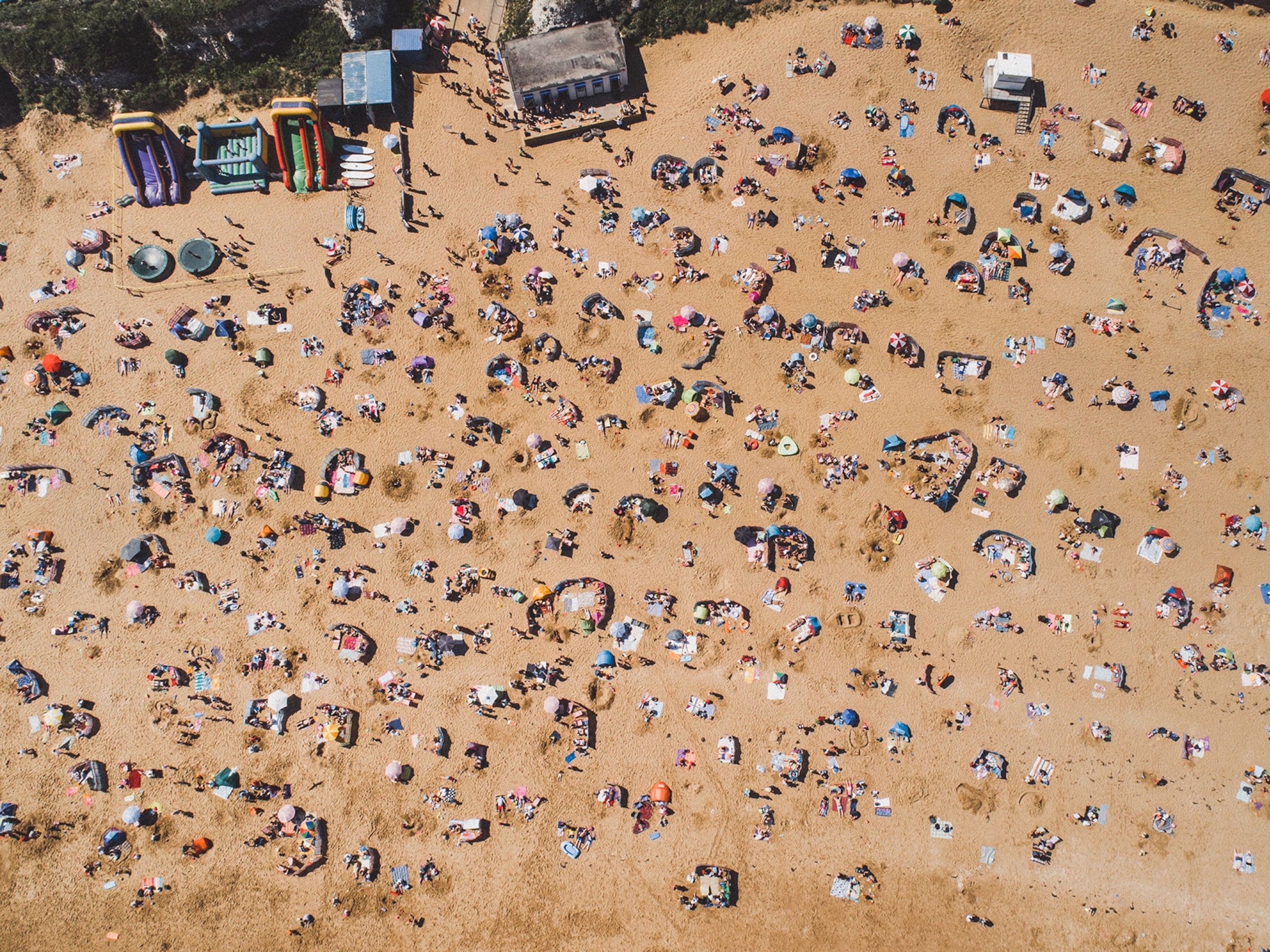How I got the shot: photographer Ben Weller on capturing Kyoto's live music scene
Photographer Ben Weller talks about capturing the Japanese city’s live music scene for our May 2023 issue.

Tell us about this image.
This is the two-piece punk outfit Roccon performing at Socrates, an underground music venue in Kyoto, Japan. I was on commission for a City Life feature on the city’s music scene, following in the footsteps of the author, Daniel Stables — exploring the streets, hitting up clubs, capturing that gritty, raucous vibe that pulsates through the article. When I read Dan’s story, I had an image in my mind that I wanted to capture; shooting this show, I was pretty sure I had it.
What did you want to convey?
This shot is all about energy — the ferocity of the sound and passion of the artists. I knew I’d need to be close to the action, so I got permission from the club owner and musicians to be right at the front. I shot wide so that both performers would be visible; I wanted readers to feel like they were in this underground club, being bowled over by the sound blasting from the amps. Yuzuka, the singer and guitarist, had a powerful presence, and shooting from a low angle emphasised that.
What kit did you use?
I currently work with two Fujifilm mirrorless cameras, the X-H2 and the X-H2s. For this show, I had a wide, fast prime lens on the X-H2, plus a zoom lens and speedlight flash on the X-H2s. I was shooting long exposures with flash on the X-H2s, letting everything blur to get a psychedelic, electric feel, while occasionally switching over to the X-H2 and shooting with the available light. This image is from the X-H2, shot at f/1.4, 1/200 sec, and 10,000 ISO. That’s high, and the image is noisy — but so was the scene. It cleaned up nicely in post using DxO Pure RAW image processing software.
Are there any particular considerations you have to keep in mind when shooting a public event like this one?
Don’t just show up and expect to be able to shoot. If it’s important — and for me, shooting this club was right at the top of my list — then take the time to make contact and get the necessary agreements. In this case, I got permission and a free ticket to the show in exchange for sharing a few images with the venue.
What were the challenges at play?
The club was dark and the lights constantly flashing and changing, which meant I had to shoot in manual exposure — the camera would have got confused otherwise. Yet, I dialled in my settings beforehand so I could just focus on the action and try to anticipate good shots.
What advice would you give to someone starting out in travel photography?
You can do ‘travel photography’ wherever you are. It’s about really seeing a place — the people, the culture, even the sounds that bring it to life. Look closely at your surroundings, learn to capture moments and weave them into a story. Putting together a series of images about your hometown will help you build a portfolio that showcases a range of abilities. Look closely at your surroundings, learn to capture moments in aesthetically pleasing ways and weave those moments together into a story.
Was this assignment typical of your career as a travel photographer?
I’ve been to Kyoto probably a dozen times, but this is the first time I saw this side of the city — the underground. I have to give props to Daniel Stables for finding this angle. Early in my photography career, I shot lots of live shows, so this assignment brought back a lot of the excitement that got me into photography in the first place.
To subscribe to National Geographic Traveller (UK) magazine click here. (Available in select countries only).





